#steve hansgen
Explore tagged Tumblr posts
Text

#fugazi#minor threat#ian mackaye#post hardcore#hardcore punk#vegetarian#straight edge#washington#dc#hc#American hardcore#American hardcore punk band#hardcore punk band#Washington#D.C.#straight edge movement#Brian Baker#Ian MacKaye#Jeff Nelson#Lyle Preslar#Steve Hansgen#80s hardcore#80s aesthetic#80s music#80s#1980s#80s nostalgia#eighties
239 notes
·
View notes
Text
Minor Threat- Out of Step Outtakes (Dischord)
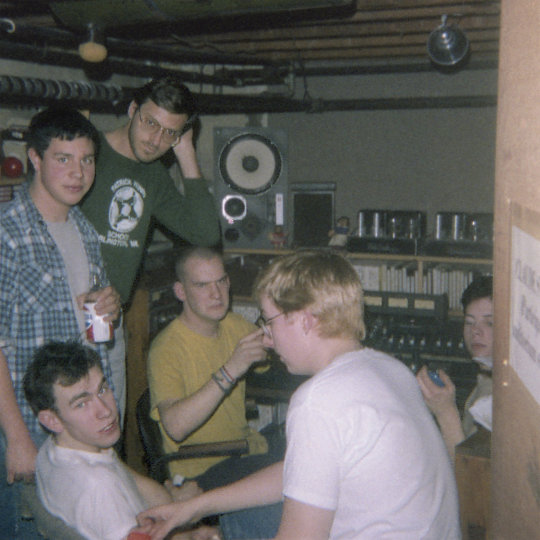
Wow, this is a pleasant surprise from, in my opinion, the greatest hardcore band that ever was. Listening to Minor Threat now, 40 years after I first heard them, and their sound still flattens me (oh how I wish I had seen them live).
Apparently in January of 1983 Minor Threat went into Don Zientara’s Inner Ear Studio to record songs as a 5-piece (Brian Baker had moved from bass to second guitar and Steve Hangen had joined on bass) of what would be the Out Of Step EP. They also recorded different versions of the quintet versions of “In My Eyes” and “Filler” which both sound great on here (and had been on a shelf for nearly 40 years before Ian and Don Z. dusted them off and remixed them).
Ian sounds extra spicy on here (and a bit more animated, especially on "In My Eyes") while Lyle Preslar’s guitar always sounds amazing as does Jeff Nelson’s drumming (hey, Baker and Hansgen are no slouches, either). The third song, “Addams Family” is a coda to “Cashing In” (“There’s no place like home…”) and is here in all its glory.
I’d call it pretty darn essential.
www.dischord.com
www.minorthreat.bandcamp.com
8 notes
·
View notes
Text
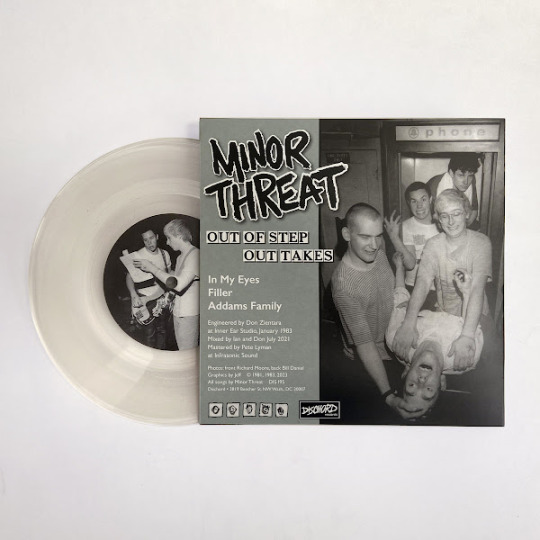
"January 1983.
Minor Threat went into Inner Ear Studio for the first time as a five-piece (Brian Baker had moved from bass to second guitar and Steve Hansgen was now playing bass). They had six new songs that would end up being the center piece of what became the Out of Step 12" EP. The band had also decided to re-record the song "Out of Step" with some extra language to try to clarify the lyrics, as well as "Cashing In", a tongue-in-cheek song about the DC punk scene which they had only played live once. After much debate, "Cashing In" was added as a hidden track on the original vinyl release though not listed on the cover or label. There was still blank tape on the reel, so they decided to record an instrumental with the working title, "Addams Family" and then recorded new versions of "In My Eyes" and "Filler" to hear what they sounded like with two guitars. "Addams Family" ended up being used as a coda to "Cashing In", but the other two songs were never mixed and largely forgotten for over 35 years until the multitrack tapes were taken into the studio to be digitized in 2021. Surprised by the discovery, Ian MacKaye and Don Zientara mixed the two songs along with the complete take of "Addams Family".
These outtakes are now being released on a 7" to mark the 40th anniversary of the release of Out of Step."
Released on December 01. 2023.
#californiababylon#minor threat#d.c. punk rock#d.c. hardcore punk#dischord records#1980s punk rock#1983
1 note
·
View note
Video
youtube
Hush by Tool from the Opiate EP
#music#tool#maynard james keenan#james herbert keenan#adam jones#adam thomas jones#paul d'amour#danny carey#daniel edwin carey#sylvia massy#sylvia lenore massy#steve hansgen#video#music video#bw#parental advisory
25 notes
·
View notes
Audio



#minor threat#in my eyes#ian mackaye#jeff nelson#brian baker#lyle presler#steve hansgen#audio#audio post#hardocre punk#punk rock#straight edge punk
298 notes
·
View notes
Link
#Brian Baker #credit #Skyler #Barberio #Images #camera #canon #photography #photo #photograph #nikon #sony #fujifilm #fuji #portrait #portland #PDX #portland oregon #photographer #headshot #Music #Punk Rock #Minor Threat #Bad Religion
0 notes
Photo

104) MINOR THREAT - jedna z najważniejszych i inspirujących amerykańskich grup hardcore punk, która stała się symbolem niezależności i twórcami idei Straight Edge, a więc świadomego życia bez używek i narkotyków. Powstała w Waszyngtonie na bazie małoletniej formacji Teen Idles, a utworzyli ją: Ian MacKaye (śpiew), Lyle Preslar (gitara), Brian Baker (bass) i Jeff Nelson (perkusja). Pierwszy koncert zagrali w listopadzie 1980 u boku Bad Brains, S.O.A. i Untouchables, a z czasem wokół zespołu zaczęła tworzyć się lokalna – młoda i pełna energii załoga punków, często skora do zadym, ale też skutecznie broniąca swej niezależności. Do historii przeszły choćby słynne wypady tej ekipy na koncerty do Nowego Jorku… Właśnie w duchu niezależności artystycznej zespół założył własną oficynę Dischord Records, jedną z najważniejszych wytwórni powstałych na scenie punkowej, wspierającą młode i twórcze kapele przez wiele lat. Jako Minor Threat zadebiutowali w czerwcu 1981 singlem „Minor Threat”, będącym trzecim w kolejności wydawnictwem Dischord (pierwszym był singiel Teen Idles), a pod koniec 1981 roku ukazał się jeszcze drugi singiel „In My Eyes”. Przyniosły one m.in. takie klasyczne numery jak „In My Eyes”, „Out Of Step” czy „Straight Edge”. Kontrowersje wzbudził natomiast utwór „Guilty Of Being White” ukazujący zarzewie konfliktu etnicznego w ich rodzinnym, zamieszkanym w większości przez czarnoskórych Waszyngtonie. W międzyczasie zespół odbył dwie trasy po USA, w 1982 docierając też na zachód Stanów, do Teksasu oraz do Kanady. W tym też roku ukazała się kultowa składanka „Flex Your Head” wydana przez Dischord i zawierająca m.in. dwa nagrania Minor Threat. W 1983 roku Minor Threat wydali swe najobszerniejsze dzieło - maksisingla „Out Of Step”, nagranego z nowym basistą, którym został Steve Hansgen. Już po rozpadzie zespołu pod koniec 1983 wydany został jeszcze singiel „Salad Days” (1985) z nagraniami z pierwszego składu, ozdobiony słynnym zdjęciem zespołu siedzącego na schodach siedziby Dischord House w Arlington. Później ukazał się też LP „Minor Threat” zawierający dwa pierwsze single. Wszystkie nagrania Minor Threat zawiera natomiast CD „Complete Discography” (1989). Po rozpadzie zespołu muzycy pozostali nadal aktywni. Szczególnie MacKaye, który obok szefowania wytworni Dischord założył m.in. cenioną formację Fugazi oraz Brian Baker, który grał m.in. w Dag Nasty i – do dziś - w Bad Religion.
1 note
·
View note
Text
2020 Detroit Autorama
With the North American International Auto Show now moved to June, we’ve had an unusually long dry spell in the Motor City when it comes to automotive exhibitions. The drought was finally broken by the annual Detroit Autorama, held February 28-March 1. Always a major show, this year’s edition was no exception with more than 800 hot rods and custom cars spread over two levels of the TCF Center.

Ed “Big Daddy” Roth’s “Outlaw,” honored as one of the 20th Century’s most significant hot rods.
The most memorable display this year was immodestly (but quite accurately) labeled “The Most Significant Hot Rods of the 20th Century.” It was a veritable who’s who of iconic iron featuring tributes to Bob McGee’s ’32 Ford, Ed “Big Daddy” Roth’s “Outlaw” and “Beatnik Bandit,” Tommy Ivo’s ’25 T-Bucket, and Norm Grabowski’s ’22 T-Bucket – the last immortalized as Kookie Kookson’s ginchy ride in the TV show 77 Sunset Strip.
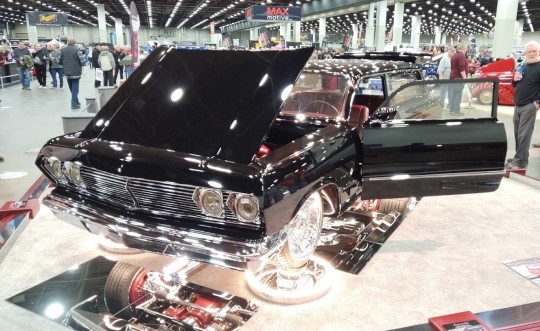
“Impressive” indeed. The 1963 Chevy wagon that won this year’s Ridler Award. (The chrome on those wheels practically glows!) The biggest excitement always surrounds the Ridler Award, named for Autorama’s first promoter, Don Ridler. It’s the event’s top prize, and only cars that have never been shown publicly before are eligible. Judges select their “Great 8” – the eight finalists – on Friday and, for the rest of the weekend, excitement builds until the winner is revealed at the Sunday afternoon awards ceremony. The winner receives $10,000 and the distinction of having her or his name engraved forever on the trophy. It’s among the highest honors in the hot rod and custom car hobby. This year’s prize went to “Impressive,” a 1963 Chevrolet two-door station wagon built by a father-son-grandson team from Minnesota. With a Ridler now to its credit, no one can question the car’s name again.
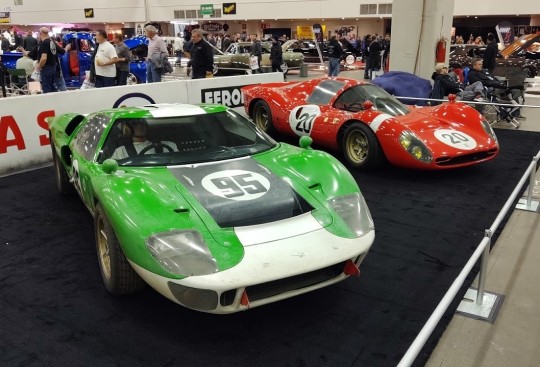
Replica race cars – a Ford GT40 and a Ferrari 330 P3 used in the 2019 film Ford v Ferrari.
There’s always a little Hollywood magic on the show floor somewhere, and this year it came from a pair of replica cars used in two big racing scenes in the hit 2019 movie Ford v Ferrari. From the 1966 Daytona 24-Hour was the #95 Ford GT40 Mk. II driven by Walt Hansgen and Mark Donohue. From the 1966 Le Mans 24-Hour was the #20 Ferrari 330 P3 driven by Ludovico Scarfiotti and Mike Parkes. How accurate were the copy cars? Judge for yourself by looking here and here.
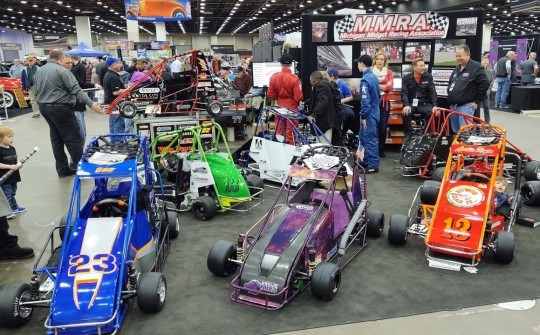
The Michigan Midget Racing Association introduces kids to the excitement of auto racing. Those who are worried about younger generations not being interested in cars could take comfort from the Michigan Midget Racing Association. The organization’s Autorama display featured a half dozen cars that kids could (and did) climb into for photos. Quarter Midget cars are sized for kids anywhere from 5 to 16 years old. And while they look cute, these race cars aren’t toys. Their single-cylinder engines move the cars along at speeds up to 45 miles per hour. M.M.R.A.’s oval track in Clarkston is surfaced with asphalt and approximately 1/20 of a mile long.
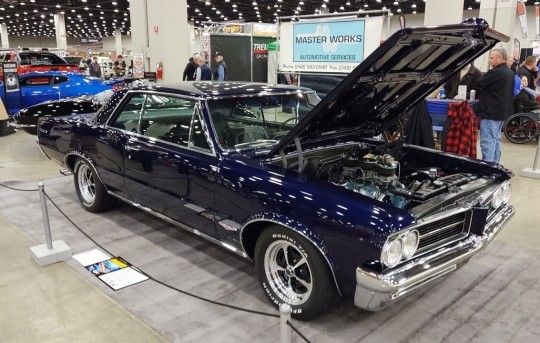
Our 2020 Past Forward Award winner – a 1964 Pontiac GTO that matured with its owner. Each year, The Henry Ford proudly presents its own trophy at Autorama. Our Past Forward Award honors a vehicle that combines inspirations of the past with innovative technologies of the present. It exhibits the highest craftsmanship and has a great story behind it. This year’s winner put a novel spin on the “Past Forward” concept. It’s a 1964 Pontiac GTO owned by Fred Moler of Sterling Heights, Michigan. Fred bought the car while he was in college and, appropriately for someone at that young age, drove it hard and fast. When adult responsibilities came along, he tucked the Goat away in a barn. Some 40 years later, Moler pulled the car out of the barn for restoration. He wanted to relive his college days but knew that neither he nor the GTO were the same as they were decades ago. Moler kept the trademark 389 V-8 but replaced the drivetrain with a more sedate unit. He added air conditioning, improved the sound system, and ever so slightly tinted the glass. In his own words, Moler enhanced the car to make it comfortable for his “more mature” self. He brought a piece of his own past forward to suit his present-day wants and needs. Like I said, a great story.
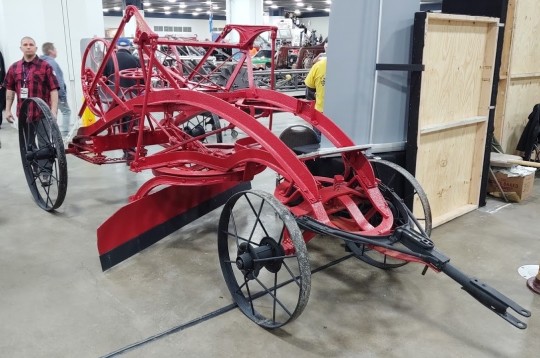
Autorama’s oldest entry – an 1894 horse-drawn road grader.
Autorama veterans know that the grittiest cars are found on TCF Center’s lower level – the infamous domain known as Autorama Extreme. Here you’ll find the Rat Rods that take pride in their raw, unabashedly unattractive appearance. By all means, take the escalator downstairs. There are always gems among the rats. This year I was thrilled to find an 1894 horse-drawn road grader manufactured by the F.C. Austin Company of Chicago. Utilitarian vehicles like this are rare survivors from our pre-automobile age. Autorama Extreme is a great place to tap your feet as well. Live music fills the lower level throughout the weekend – lots of 1950s rockabilly, of course, but plenty of blues and soul too.

Don’t miss Toy-a-Rama with its assortment of vintage car books and brochures. Each year, I make a point of visiting Toy-a-Rama at the back of TCF Center. Vendors sell hundreds of plastic model kits, diecast models, memorabilia, and toys. But it’s the great selection of auto-related books, magazines, and vintage sales literature that always reels me in – and leaves my wallet a little lighter on the way out.

A beautiful 1:1 scale model of “Uncertain-T” – some assembly required. And speaking of model kits, maybe the coolest thing I saw all weekend was down in Autorama Extreme. It was a beautifully crafted, partially-assembled model of Steve Scott’s “Uncertain-T” just like Monogram used to make – but this one was life-sized. Really, the giant sprue was terrific enough, but the giant hobby knife and glue tube took the whole thing to the next level. (Skill Level 2, as the box might’ve said.)
All in all, another great year celebrating the wildest, weirdest, and winningest custom cars and hot rods around. If you’ve never been, make sure you don’t miss Autorama in 2021.
Matt Anderson is Curator of Transportation at The Henry Ford.
#1 Ford Daily | Đại lý – Showroom ủy quyền Ford Việt Nam 2019 Ford Daily là showroom, đại lý Ford lớn nhất Việt Nam: Chuyên phân phối xe ô tô FORD như: EcoSport ✅ Everest ✅ Explorer ✅ Focus ✅ Ranger… [email protected] 6A Đường Trần Hưng Đạo, Phường Phạm Ngũ Lão, Quận 1, Hồ Chí Minh 711240 0901333373 https://forddaily.com/ https://forddaily.com/xe/ https://forddaily.com/dai-ly/ https://forddaily.com/bang-gia/ https://forddaily.com/tra-gop/ #forddaily #dailyfordhcm #fordshowroomhcm https://www.google.com/maps/place/Ford+Daily/@10.7693359,106.696211,15z/data=!4m5!3m4!1s0x0:0x1f188a05d927f4ff!8m2!3d10.7693359!4d106.696211
1 note
·
View note
Text

Minor Threat
#fugazi#minor threat#ian mackaye#post hardcore#hardcore punk#vegetarian#straight edge#washington#dc#hc#American hardcore#American hardcore punk band#hardcore punk band#Washington#D.C.#straight edge movement#Brian Baker#Ian MacKaye#Jeff Nelson#Lyle Preslar#Steve Hansgen#80s hardcore#80s aesthetic#80s music#80s#1980s#80s nostalgia#eighties
125 notes
·
View notes
Text
40 years ago today
Minor Threat at Wilson Center, Washington DC, April 30, 1982. Pic by Ellie Moran
This is Minor Threat's second show after they re-formed with Steve Hansgen on bass
#punk #punks #punkrock #hardcorepunk #minorthreat #IanMacKaye #history #punkrockhistory #otd


7 notes
·
View notes
Photo

Brian Baker - jest amerykańskim muzykiem punk rockowym. Jest najbardziej znany jako jeden z założycieli hardcore-punkowego zespołu Minor Threat, oraz jako gitarzysta w Bad Religion od 1994 roku. W grze Minor Threat początkowo grał na gitarze basowej, zanim przeszedł na gitarę w 1982 roku, kiedy Steve Hansgen dołączył do zespołu, a następnie wrócił na bas po odejściu Hansgena. Założył także Dag Nasty w 1985 roku, był częścią oryginalnego składu Samhaina i występował w filmie Doggy Style, The Meatmen (z członkiem Lire Preslar, członek mniejszościowego zagrożenia), Government Issue i Junkyard (hard rock band). W 1994 r. Baker otrzymał propozycję koncertu z R.E.M. ale odmówił, przyjmując zamiast tego stanowisko w Bad Religion jako zastępcę Bretta Gurewitza. Eksperymentował również z bardziej pop kierunkiem pod wpływem U2, z zespołem o nazwie 400. Baker krótko koncertował z Me First i Gimme Gimmes w 2005 roku i pojawił się na kanadyjskim punkowym zespole Penelope's second album (Face au silence du monde).
0 notes
Text
„I have never wanted people to look at us as a Holy Terror reboot”
„I have never wanted people to look at us as a Holy Terror reboot” - https://metalindex.hu/2020/09/08/i-have-never-wanted-people-to-look-at-us-as-a-holy-terror-reboot/ -
Guitarist Mike Alvord about Mindwars
In 2013, you established a new group, Mindwars. I think the moniker speaks for itself, right?
Right after HT, I reconnected with my childhood friend Ron Cerro, who I mentioned before. He was playing in a band that used to be punk, but were shifting to more of an alternative style. You have to remember this was 1989. I went to see them play and Ron asked me to join them for a couple acoustic songs. I ended up joining the band and we change the name to Black Apple Forest. It was a pure alternative genre band. We played together for about a year and went through different bass players and drummers. The last drummer and singer for BAF moved on and formed a band called H.A.G.S. It was the last initial of all the members. The bassist was Steve Hansgen, formally of the punk band Minor Threat.
We rehearsed a lot and wrote about 10 songs. We were set to record in the summer of 1991 and start playing live, until I decided to go back to university. Steve wasn’t into a part-time band arrangement, so the band dissolved. I continued writing material until around 1993 and then from 1993 until around 2003, I barely touched my guitar. I played a little acoustic, but that is about it. I started playing a little more around 2005. I dug up some old cassette tapes and started using my computer to record songs on my own.
In late 2013, Roby Vitari and I reconnected. I had met Roby in Milan, Italy when HT was on tour with Exodus and Nuclear Assault. I think Milan was our last show as HT. Roby and I reconnected through Facebook and started chatting. He asked me if I still played guitar and I sent him some mp3s of songs I had written during the last year of HT and right after. He put some drums to the songs and Mindwars was being born. We knew we wanted a name that connected us with Holy Terror, without disrespecting the legacy. When we settled on the name Mind Wars, I decided to combine the words into one Mindwars and actually ran the idea by Kurt. I didn’t had to get his permission, but I felt it was appropriate to see if he minded. He said go ahead and good luck. So, there you have it…Mindwars was formed.
Was your goal to keep alive Holy Terror’s heritage?
After reading my history of playing in this interview, I think you will get the sense that my roots are around Speed/Thrash Metal. While I have played various genres and I do like all types and styles of music, this is where my heart resides. So, since much of my material in 2013 was written back in the late 80’s, it had a tremendous flavor of HT and the 80’s speed/thrash genre in general. It wasn’t so much to keep the legacy alive as it was that this is the style of music I write. The connection with HT would allow people to know who we were and help give us a chance with a new and old audience. I have never wanted people to look at us as a Holy Terror reboot. Just my perspective on Holy Terror and the 80’s genre as a whole. With our latest release The Fourth Turning, I did write songs titled MindWars and Holy Terror, so I am purposely paying respect to my old band, but we are definitely not Holy Terror.
What about your bandmates and their musical past?
I actually don’ know a lot about Danny’s past other than he is a natural guitar player and not a bassist. Roby played in several well known Italian bands. He played, recorded and toured quite extensively with Jester Beast, Head Crasher and Creeping Death. Rick used to play, record, and tour with a band called Green Vinyl Dream and actually toured as a supporting act for Pat Benatar. Rick is not a Thrash Metal guy by any stretch of the imagination. He has also palyed in various other bands and is currently in a Pat Benatar Tribute band. They are called Live From Earth and the singer looks and sounds exactly like Pat Benatar.
The band’s line up seems to be steady from the start, this year bassist Rick Zaccaro joined the band, while Danny „Z” Pizzi switched to guitar. Does it mean that all of you are on the same musical wavelength, there is a chemistry among you and you get on well with each other? Since you are living in Los Angeles and the others in Turin, Italy, how can you practice? How often do you practice at all?
I’ll take these two questions together. When MW formed, both Roby and Danny lived in Turin, Italy and me in Los Angeles. So, rehearsing was out of the question. If it wasn’t for modern technology, a band wouldn’t be possible. The main reason we got Danny was because he was willing to play bass. His main instrument is the guitar. And two, it made sense to have the rhythm section of the band be in the same city. This allowed the two of them to rehearse together. In 2017, Roby actually moved to Southern California and applied for US citizenship. Now, two of us were in the same area and Danny was the remaining member in Italy.
Roby and I had the opportunity to rehearse now and actual start writing music together. We started getting offers to play gigs locally, but without Danny in the Los Angeles area it was impossible. When Schecter Guitars asked us to play their 2019 NAMM After Party, we were about to decline and then I thought of a friend of my by the name of Rick Zaccaro. I had only recently met Rick through a mutual friend. We had jammed a bunch playing cover songs. Rick and I developed a friendship and had mutual musical interests with bands like Priest, Maiden, Sabbath, and Rush. Rick was not much of a thrash guy, but did like some of Mindwars songs off the album Do Unto Others and Sworn to Secrecy. Not wanting to turn down the Schecter Guitar offer, I asked Rick if he was interested in filling in on bass. He said yes and then we talked with Danny. Danny completely understood and for the most part this was a one off gig.
After the show, Roby and I were talking about how great it was and how the sound was different with an actual bass player. This is no disrespect to Danny. He did a great job playing bass on our first three albums, but Danny is a natural guitar player and Rick a natural bass player. You can clearly hear the differences. Roby and I talked about asking Rick to join us and asking Danny to move to guitar. We first approached Danny and he was in to it. We then talked with Rick and he said he would give it a shot. We played couple other shows in 2019 with Rick and things were beginning to take shape. Roby and I try to practice at least once a month and during the writing and recording of The Fourth Turning, we played together almost weekly for a couple months. Rick rehearsed with us several times, too. Unfortunately we have not had the opportunity to play together as a four piece yet.
After releasing your second album, Sworn to Secrecy you left Punishment 18 Records and got signed by Dissonance Productions. Did they offer you a good deal? Did they promise you tour support, promotion etc.?
We were very fortunate and grateful that Punishment 18 gave us a shot and released The Enemy Within and Sworn to Secrecy. When Mindwars formed, there wasn’t a whole lot of interest and P18 gave us a chance. They really helped us get things going. We didn’t have any plans for a third album and I get a message from Steve Beaty with Dissonance Productions and Plastic Head. They offered us more money than P18, but it wasn’t just the money that made us switch labels. It was the fact that they were a UK label and affiliated with Plastic Head. Things are different nowadays and unless you are an established band, there is no tour support. We are pretty much on our own when it comes to playing live. The sales of Do Unto Others weren’t very good and large festivals and tours were only interested if we would play a Holy Terror set. We were a bit disappointed and got to the point where we discussed moving on from Mindwars and doing something entirely different. After the first show with Rick, we got a little revitalized. We started talking about doing a fourth album, but with a completely different approach. Dissonance was also disappointed with DUO, but offered to give us one more shot.
When did you start working on the new album and how were the songs penned compared to the previous albums?
The writing process started about the same as DUO. I would record riff after riff after riff and send them to Roby. This time though we were much more critical. We wanted to maintain the speed of our faster songs, but wanted to stick more to heavier midtempo songs when we slowed things down. TEW and STS were mostly written by me years earlier. There were some newer songs on those albums, but many of the riffs I already had laid down. Once we had about 15-20 riffs, we did something we never had the chance to do before and that was Roby and I played together. We would play each riff and find ones that worked well together. This sort of writing is how it is supposed to happen, but for the first three albums it was impossible with Roby and Danny living in Italy. We ended up with about 12 or 13 songs. As we continued to rehearse and arrange the songs, we ended up cutting the number of songs down to 10. We felt this was more than enough. We really focused on each song. We merged various riffs and even created a few new ones to make sure each song had the right tempo and sound. I was listening to a lot of different music and this help form the songs, too. It was more of a collaborative effort this time around.
How did the recording sessions go?
Recording this time around was also different. Roby recorded all his drums for the first three albums at his study in Italy. Danny would record bass at his studio, too. I recorded guitars at my home studio, but my recording equipment wasn’t the best and I think the overall sound was sacrificed. The guitars do sound much better on STS than TEW because I recorded DI tracks and Bill Metoyer reamped them. This time around I was in the studio with Roby when he recorded drums. We would bounce ideas off each other and I could give input on what I thought sounded best. This dynamic really helped polish the sound. Rick and I recorded the bass tracks together and Roby popped in during my guitar and vocal recordings. This approach felt more like a band effort as opposed to our first three albums. Roby also kept pushing me to add various harmony guitar parts. This is something I did a little on TEW, but not much on STS or DUO. I spent more than a month working out the various harmony guitar parts. When it came to mixing and mastering, we hired Cris Copat with KK Studios. This proved to be the game changer with the sound of this album. Me, Roby, and Cris spent hour after listening and adjusting the mix. Cris was very patient with us and I think it paid off.
Could you tell us any details considering the album?
The mixing and mastering process was much different this time around. Roby and I were much more involved and with Cris being about 10 years younger than us, it provided a different perspective and idea with how things should sound. There are no fillers on this album. Since we wrote 13 songs, we were able to take the top 10 without feeling like we sacrificed anything. The sound is heavier, some songs faster, and the overal aggression of the album is much more intense than the first three albums. We made it a point to write some really heavy mid-tempo songs. It was something we really lacked with our first three albums. The lyrics of the album follow a similar theme as the album title. Much of what I wrote about has to do with the things going on in our world at this time. Some of the lyrics, such as the opening track The Awakening, I wrote in 2019, but the song (Who’ll Stop the) Aryan Race is really about WWII and Nazi Germany. While it does reflect some of the things going on in our world now, I was inspired to write it after watching a TV series called Man in the High Castle. There are definitely anti-war, environment destruction, and goverment control throughout the entire album.
Do you follow the musical path of the previous albums or did you change it a little bit?
We definitely wanted to maintain the same idea of keeping the with the direction of 80’s speed/thrash but with a modern flavor. However, we also wanted to make this album sound different than the first three. You will over course recognize some of the style as similar to the first three albums, but our sound has definitely matured on this album. The various guitar harmonies, the vocal melodies, and the more technical nature of some of the songs is a bit of a departure from our first three efforts.
The cover is a departure from your first three albums and themes. What can you tell us about it?
The first three album covers revolved around a character we referred to as Wally. He was named after Colonel Walter Kurtz from the movie Apocalyspe Now. I had a specific intent with each of the first three albums and Wally was the central theme. We also discussed leaving Wally with DUO. It seemed to fit to leave him with that album. This album I had the overall concept, but didn’t have a title until a few months ago (around July 2020). It is interesting how the cover really fits with what we are experiencing in the world today, but I actually had the concept and cover completed before the end of 2019. I have always been a proponent and interested in the enviroment and conservation. The cover shows the destruction of modern society with emphasis on pollution. With the chaos and violence all around us it fits even beter.
The title was going to be The Awakening. I had this title for a while, but when Sacred Reich came out with their most recent album, we nixed the title. For a long time we were using the working title Blood Red. It fit with the color scheme of the cover, but it really didn’t have any real meaning. If you recall, The Fourth Turning was the opening track title off Do Unto Others. It is an interesting theory about generational changes and cycles. Roby and I were not really happy with Blood Red, so we tossed around a bunch of different titles and nothing seemed to stick. The Apocalyspe, Tomorrow’s End, End of Times, etc, etc. Title after title ad we couldn’t settle of anything, until Roby threw out The Fourth Turning. It fits perfectly.
What about the Slayer cover? Why did you use it only as a bonus song?
It was really a fluke. The end of 2019, Roby saw an announcement asking for bands to participate in a Slayer tribute compilation. He asked me if I was interested and I figured why not. I first asked if we could play Epidemic. It’s one of my favorite Slayer songs. It was taken so we thought Chemical Warfare would be a great option. After I listened to it, I was reminded how long the song was and I wanted to do something quick and short. You know, something fast in a small package. This is when we ended up on Criminally Insane. We recorded it in less than a week in early January 2020 and were happy with the way it came out. We decided to ask Dissonance if they were ok with adding it as a bonus track and they were supportive.
How do you find the present and future status of metal music?
The present state of all music is a bit nebulous with the inability to have live shows. I am seeing some bands getting creative with streaming and drive in concerts, but this type of live music is not available to all bands. I am hopeful that 2021 will be a huge shot in the arm with adrenaline for the music industry. It definitely needs it. There seem to be some resurgence with bands like Raven and Armored Saint putting out new music which sound like the music from their heyday. Testament, Exodus, Onslaught, and Death Angel have also put out some great music recently, so I think things might be picking up in the thrash/speed world.
Tell us please about your future plans! Is there a show in Hungary in your mind?
Right now we are really focused on getting as many people as possible to hear The Fourth Turning. We are trying to promote it the best we can and think people will like the changes we made when you compare it with our first albums. I have my fingers crossed that Japan will host True Thrash Fest in 2021. We were supposed to play this past February, but between visa issues and the coronavirus, we were unable to play. If we get enough exposure and interest with The Fourth Turning, I am also hopeful we will return to Europe. It would be nice to play a couple festivals and tie in some shows along the way. I would love to play in Hungary!
Mike, thanks a lot for the interview! What are your closing words?
Thank you so much for the support and to ever around the world keeping Speed/Thrash Metal alive. Stay safe, stay sane, and stay metal! Speed Kills!
Mike nowadays
0 notes
Audio


Don’t smoke I don’t drink I don’t fuck At least I can fucking think… Out of step with the world!
#minor threat#ian mackaye#brian baker#jeff nelson#lyle preslar#steve hansgen#punk rock#hardcore punk#d.c. hardcore#out of step
86 notes
·
View notes
Photo

Minor Threat - Post Breakup Article - Image: We Cause Havoc Wherever We Go
68 notes
·
View notes
Text
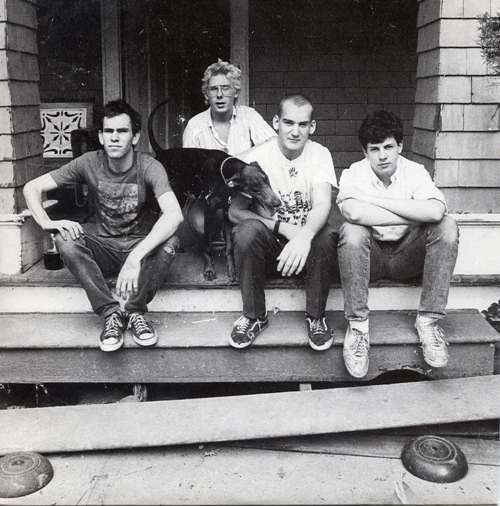
Minor Threat
#fugazi#minor threat#ian mackaye#post hardcore#hardcore punk#vegetarian#straight edge#washington#dc#hc#American hardcore#American hardcore punk band#hardcore punk band#Washington#D.C.#straight edge movement#Brian Baker#Ian MacKaye#Jeff Nelson#Lyle Preslar#Steve Hansgen#80s hardcore#80s aesthetic#80s music#80s#1980s#80s nostalgia#eighties
64 notes
·
View notes
Text
39 years ago today
Minor Threat at Wilson Center, Washington DC, April 30, 1982. Pic by Ellie Moran
This is Minor Threat's second show after they re-formed with Steve Hansgen on bass
#punk #punks #punkrock #hardcorepunk #minorthreat #IanMacKaye #history #punkrockhistory #otd

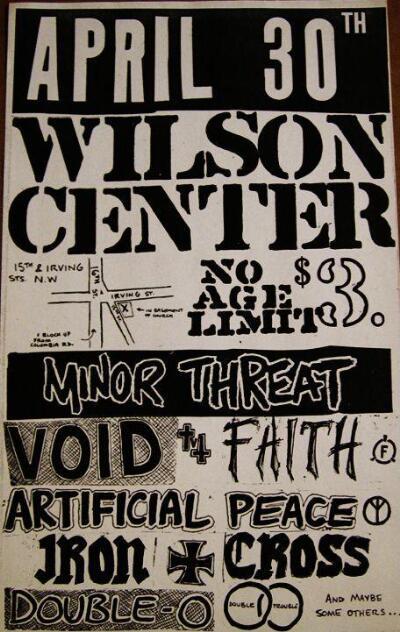
6 notes
·
View notes